Published by: Shermin Voshmgir on Oct 6 2023
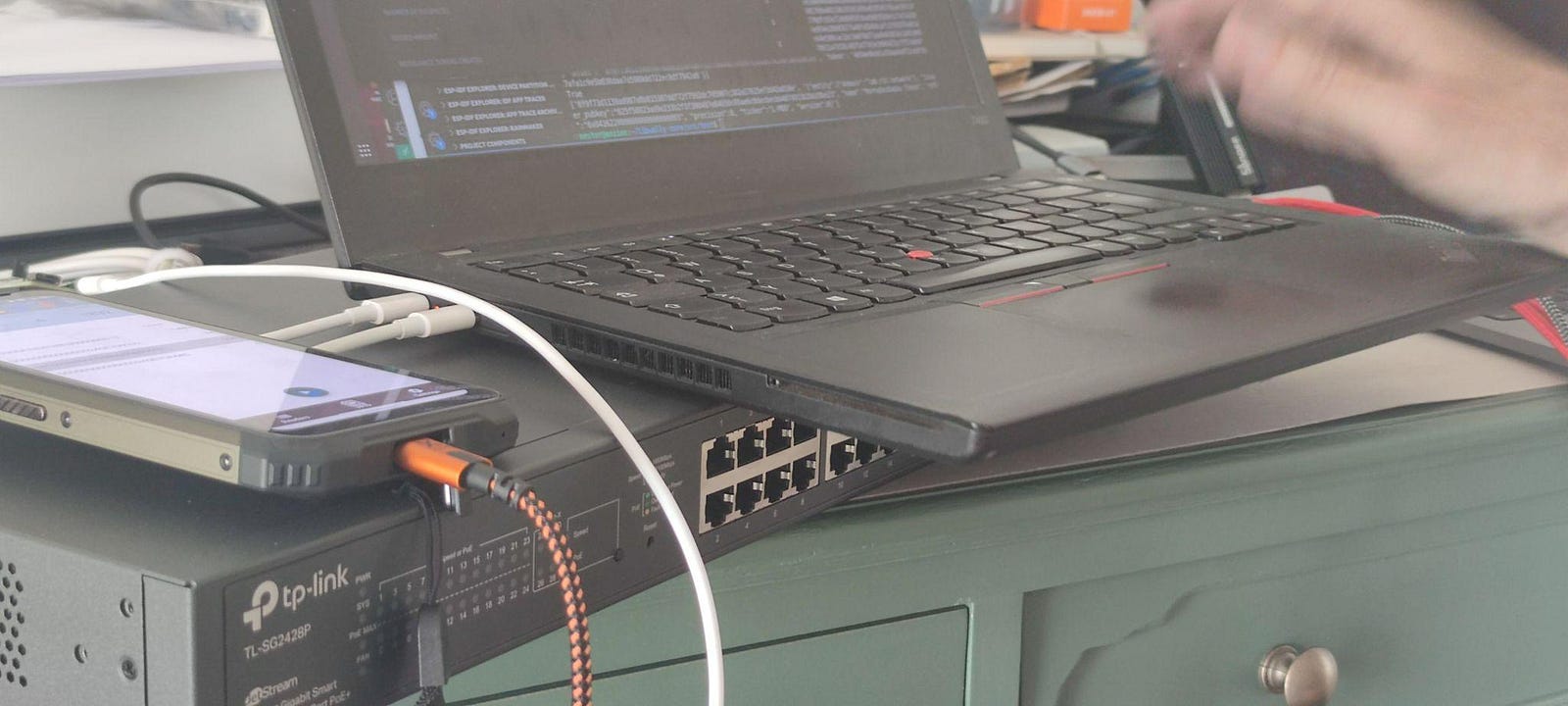
Proof-of-Olive-Tree: Technical Infrastructure
Part 1 of this Series “Why we need a market for public goods” explains why and what Tom Fuerstner and I are doing on the farm. Part 2 “Proof-of-Olive-Tree: Technical Infrastructure” explains the agricultural decentralized physical infrastructure (DPIN) we are modelling and implementing.
The pandemic was a game changer for me to finally move to the countryside — to the wonderful region of Altentejo in Portugal—with the aim to dedicate all future research efforts towards finding a way to contribute to a solution to the above mentioned problems.
Together with my partner — Tom Fuerstner — our aim is to apply our technical and economic know how to figure out how to measure the effects of agricultural practices on biodiversity maintanace, and to create publicly verifiable proofs of biodiversity maintenance (via proofs-of-ecosystem-services, proof-of-olive-tree, proof-of-water-retention, proof-of-biodiversity-protection, proof-of-CO2-capture, proof-of-soil-quality, etc.) and create additional revenue streams for farmers via tokenised certificates .
Before getting into the details of our prototype, here a few details regarding the farm:
- The farm was was abandoned for over 20 years before I bought it.
- It has an olive grove with around 2500 olives & some acorns — who all have an average age of 100 years, some 500 years or more.
- Most trees are on a mountain slope. The trees were terrassed around 100 years ago with big granite stones. The terracing has the function of water retention to protect the trees and the soil agains the occasional and heavy rainfalls that Alentejo typically has.
- The olive orchard needed to be cleaned since the trees had not been pruned for years. Bushes had grown in between, and the forest roads that serve as a firewall to the neighbours were totally overgrown to an extent that imposed a danger to spreading wildfires if they would occur.
As we started to clean up the land, it didn't take long before some farmers suggested that we should kill all the old trees, destroy the stone terrasses and plant new olive trees — so we could harvest the land with machines more effectively and have more revenues from the younger trees which — in their opinion —would bear more fruit and be more productive. This rather common agricultural thinking, from a modern day perspective, sounded insane to us and proved the point of what we were trying to build. Let me explain why:
- Young olive tree produce olives only after 4–5 years.
- They are fully productive for agriculture only after 10 years.
- During this time (10 years), they need a lot of water & fertilization to grow and survive heatwaves.
- Old trees don’t need artificial irrigation (or at last not as much) or chemical fertilization, and they can produce sprouts up to 1800 years. While they can be more productive with irrigation and fertilization, they also survive without rainfall or irrigation and bear fruit (albeit alternate). Fertilization and soil balance can be applied in a more natural way.
- Old trees have bigger root systems that connect with mycelia networks underground and foster other plant life and animal life below and above ground and contribute to a better soil quality and water retention. Their roots also protect the soil from being washed away when there is heavy rainfall.
- The stone terraces are an additional measure to protect the soil from being washed away, apart from contributing to localised water retention around the tree even long after the rainfall.
Apart from these facts, the costs associated with killing 2500 tress, removing the stone terrasses with heavy machinery, planting new trees, investing in irrigation systems, paying for the water, fertilisers and modern harvesting machines need to be amortised over decades against future crop sales, when one could at least cover the costs - if not more - by keeping the old trees. (We are currently working on different cost benefit analysis that we will publish once we have accurate numbers).
Proof of Concept: Publicly Verifiable Productivity Data
We want to identify, deploy & test how we can incentivise sustainable agricultural practices by correlating the data collected about agricultural practices to the biochemical data that we measure with automatic and manual sensors (such as soil sensors, chlorophyl sensors, drones) and which will be attributed to each tree NFT via a campus network.
Our aim is to create a range of tokenized proofs-of-ecosystem-sustainability, which will be issued and settled on a publicly verifiable Web3 infrastructure with the aim to create a market for these proofs and therefore additional revenue streams for farmers for “doing the right thing.”
The prototype we are building requires three components:
- Hardware wallets
- Sensor technology
- Scientific algorithms
1. Tree Wallet
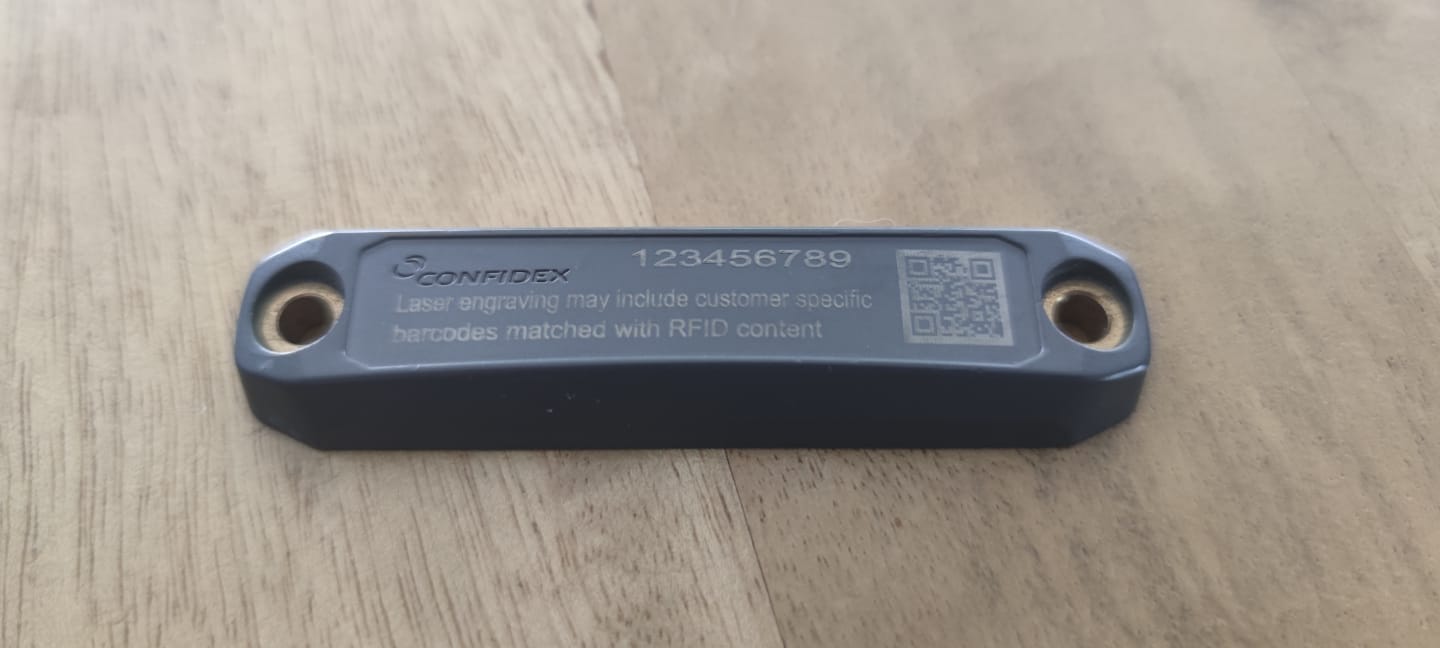
Each tree gets a tagged with a transceiver: The tag can be programmed to have a blockchain wallet, and therefore a unique blockchain identity. The tag can communicate with other systems via NFC & RFID.
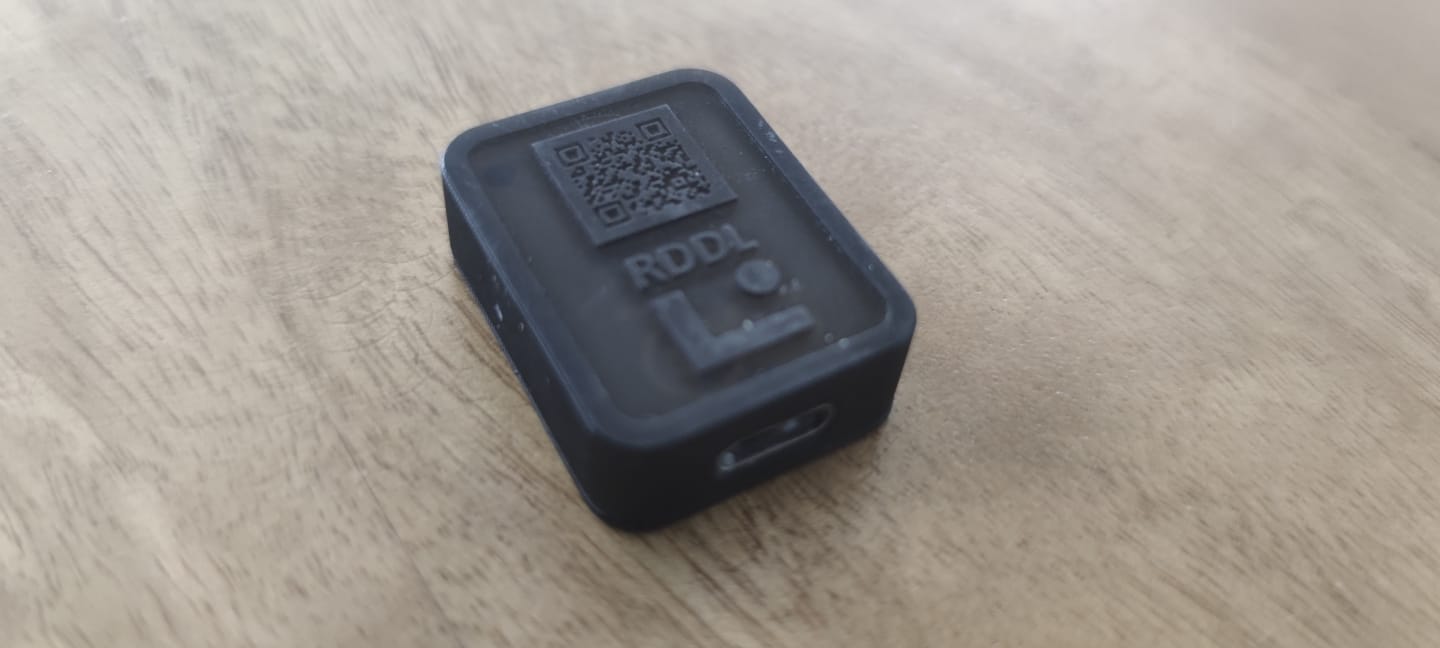
This is RDDL networks trust anchor with which we create a unique blockchain identity for each tree.
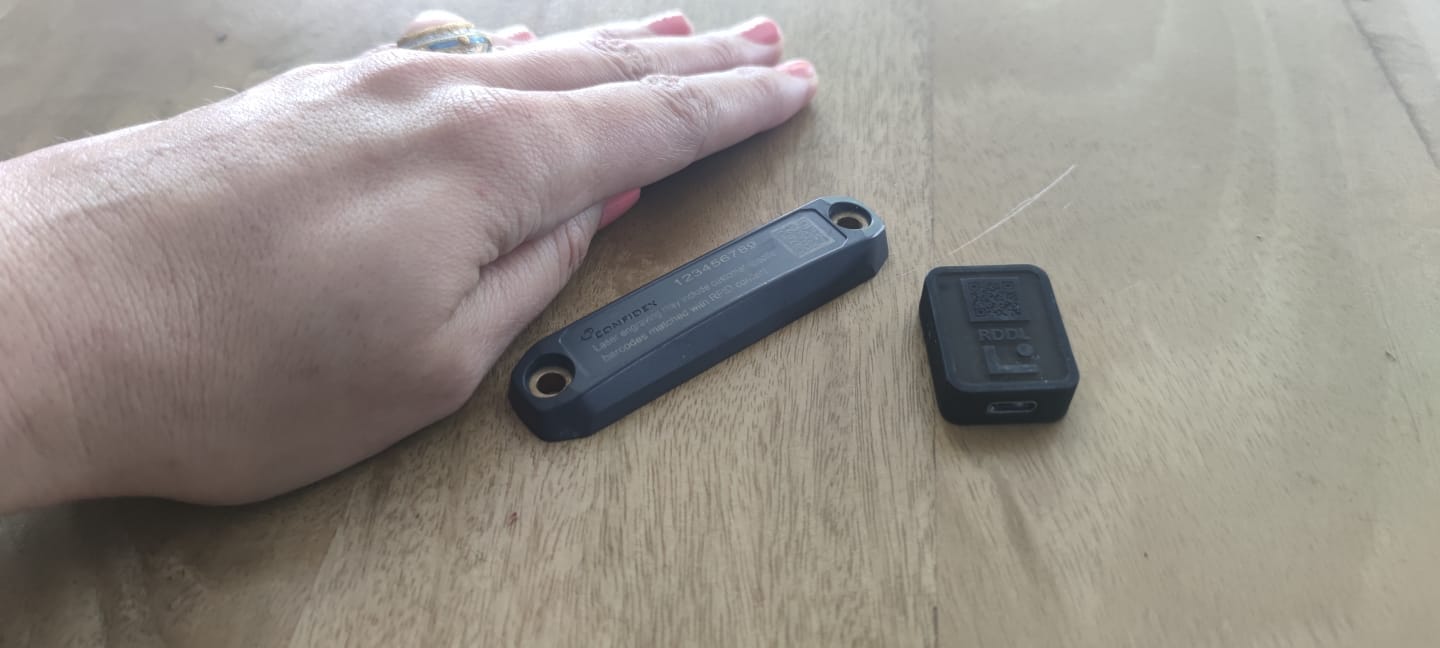
Size of the Hardware components.
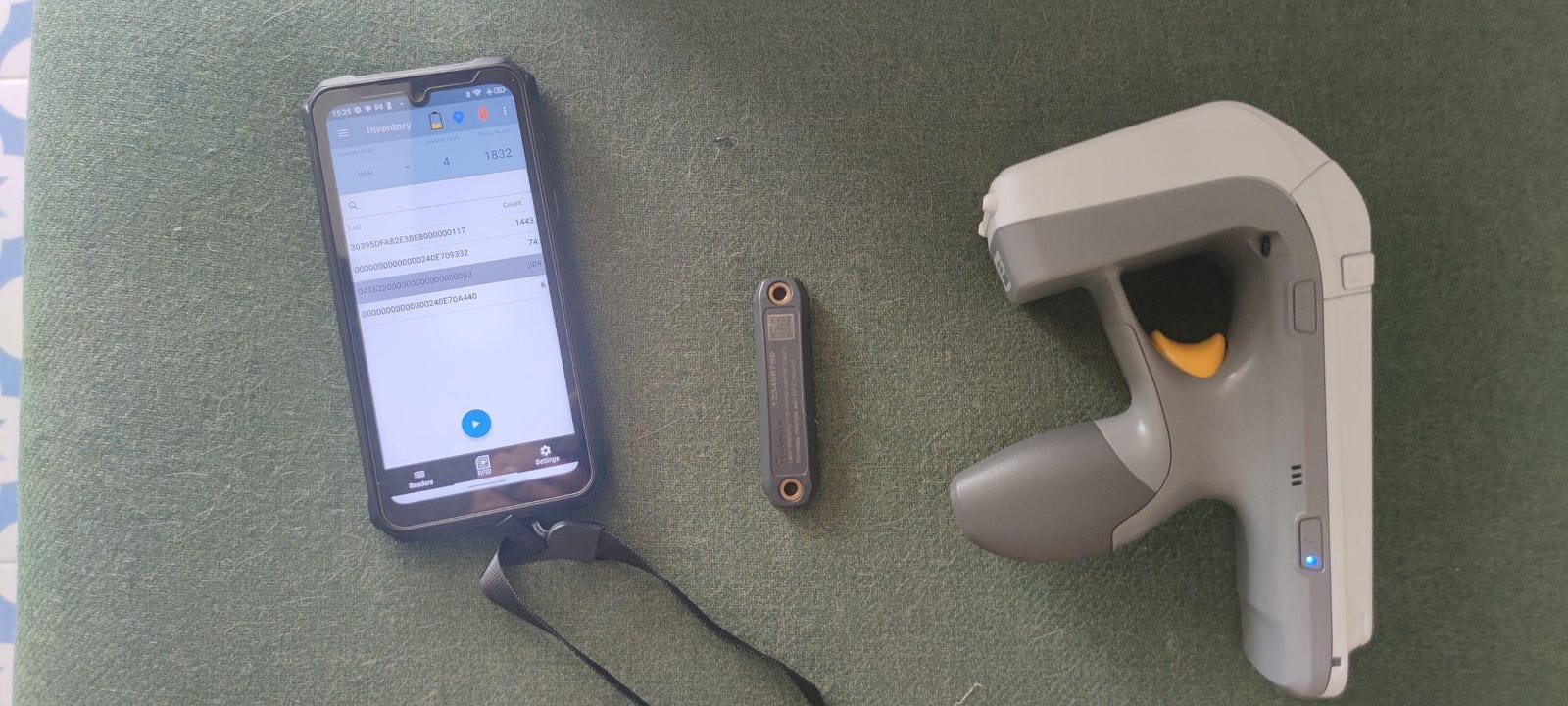
The mobile phone (left) has an app that serves as a graphical interface which can read data from the tree wallet (middle) or transmit data to the tree wallet. The tagging device (right) is used to transmit the data to wallet via RFID/NFC.

Trust anchos (not visible) connected to computer to initiate unique blockchain address for tree and transmit data to mobile phone.
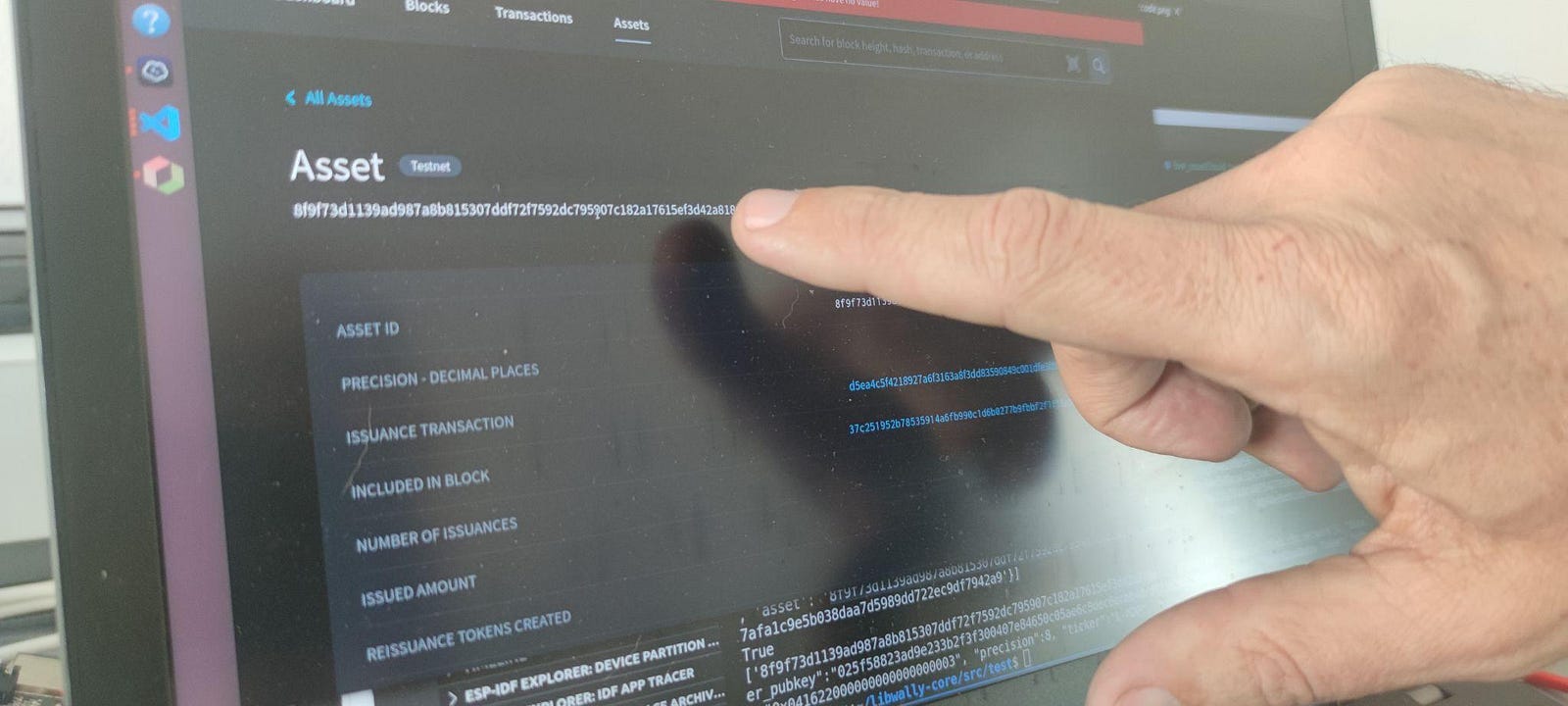
Newly generated tree address on the Liquid testnet (RDDL network).
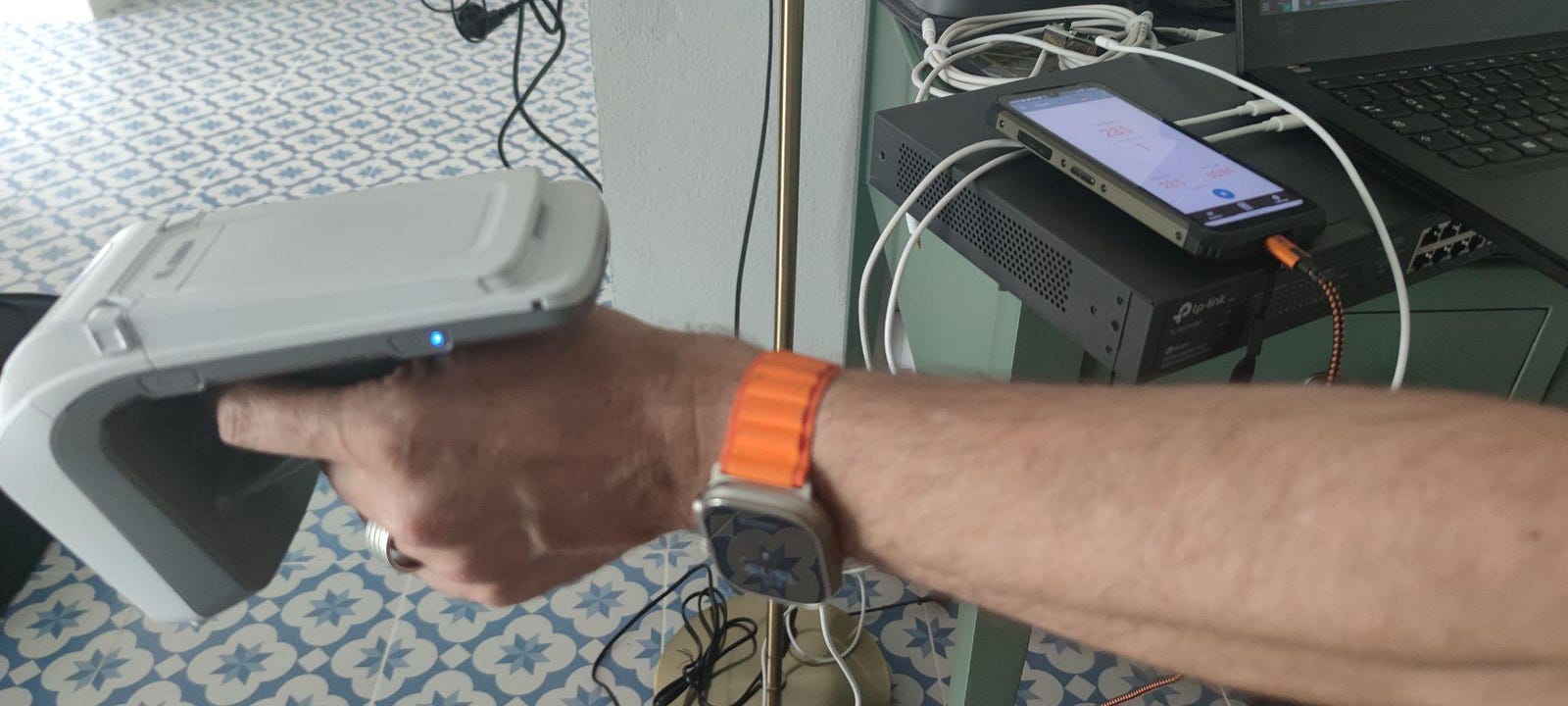
Tagging tree wallet with tagging device.
2. Sensors
Once each tree is equipped with a blockchain wallet, we need to provide and collect more metadata related to the tree, such as the age of the tree, the type of tree, the condition of the tree, the biochemical components of the tree and the soil around the tree. This data can be collected manually or automatically. It can come via software, hardware or human oracles.
- Human Oracles: Human expert who can evaluate age and type of olive tree which is relevant for estimating, for example, the average CO2 capture per day.
- Software Oracles: External data such as public weather information, other relevant public or private data that needs to be trusted, and correlated to other biochemical data in the the soil, etc.
- Hardware Oracles (Sensor data that can automatically or manually measured)
- Soil Sensors (automatic & manual, depending on what is being measured. Anything that needs a spectrometre - for example - is manual)
- Chlorophyl sensors (manual): measure the level of chlorophyl in leaves.
- Drones (automatic): can take periodic pictures of the tree, proving that the tree still exists, and has not been replaced by a younger tree, or cut.
The aim is to automate the measuring process via hardware oracles as much as possible in the long run. This would help create publicly verifiable data trails about farming practices and the biochemical effects on the soil, plant and animal life around the tree and the tree itself - all without the need of manual intervention.
In the future, such data can be used to train special purpose LLMs that focus on the evaluation of data collected of the effects of agricultural practices on the land. For now this evaluation process needs to be done in collaboration with specialised environmental scientists who help us understand what we have to measure, how often we have to measure it and how we should correlate it with other data.
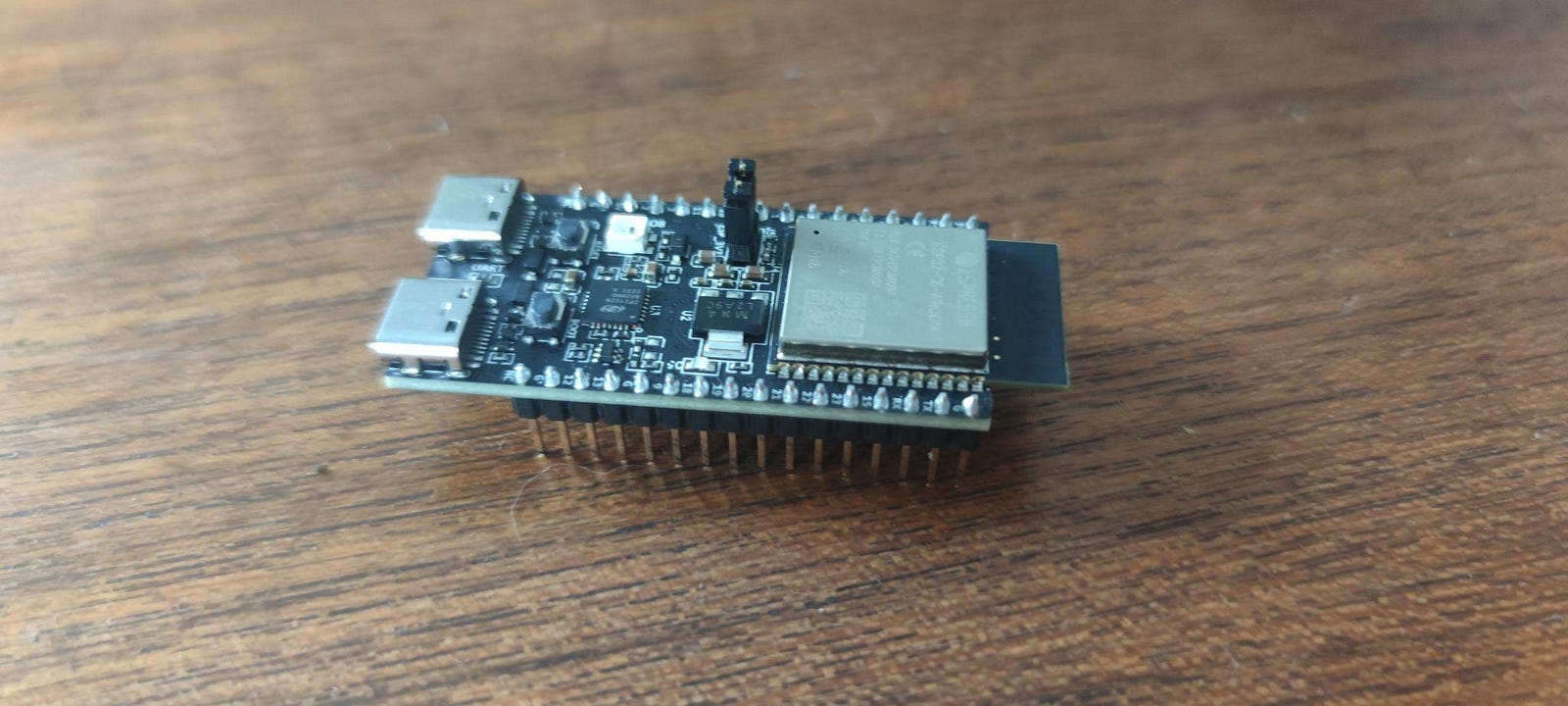
Sensor board: Open hardware component upon which the sesors will be built.
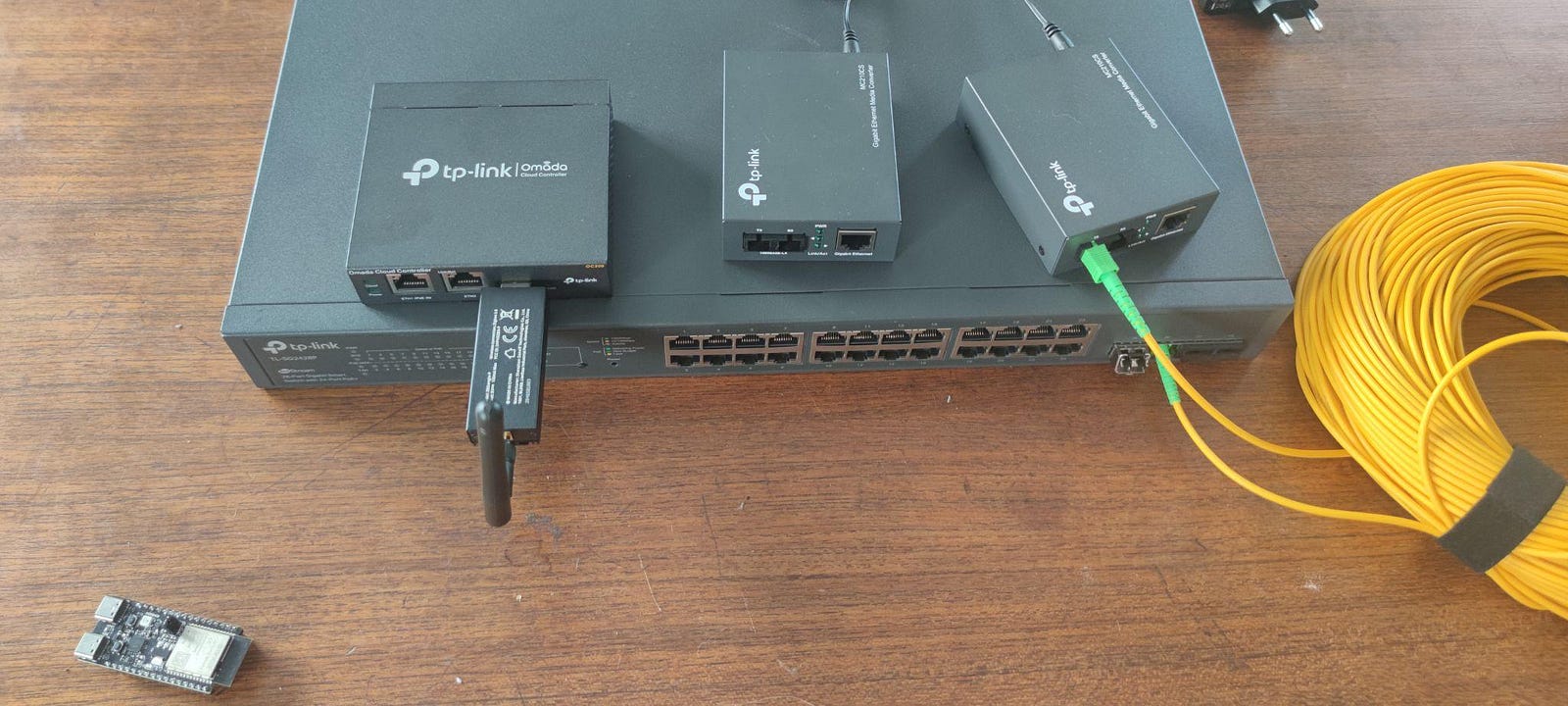
Communication switch & between which will receive the data from the Zigbee transponders and Zigbee end-nodes (sensors) on campus (olive orchard) and send this data via a fibre optic cable to the house and ultimately to the Internet.
Agricultural DPIN: A Web3 compatible agricultural sensor network
The hardware that is necessary for sensors communicate with the tree wallet, with each other and with Web3:
- Internet connection: Glass fibre cable to the main house (need because of amount of data and communication costs, as long as 5G and LTE are not reliably available in the countryside
- Web3 Infrastructure: Tree wallets (created with Trust Anchor & Planetmint)
- Open Sensors: All sensors need to be programmable interface
- Campus Network: ZigBee network — lets sensors communicate with each other and with the tree wallet
Data Science Approach
While setting up a sensor network that is Web3 compatible is a technical challenge, the question of what we need to measure and how often we need to measure it is a scientific question that needs to be provided by biologists and specialised ecosystems scientists. Most relevant question are:
- Which data is relevant in which context?
- How is it measured?
- How is it evaluated?
- Which data modelling techniques will be applied?
- Which data evaluation techniques will be applied?
- Can we fall back on existing models or do we need to design new techniques?
- Do we need to measure discrete data (often have gaps) or continuous data (don’t have gaps)?
What do we need to measure? Together with scientists we need to identify what biochemical compositions of soil quality, tree properties, and olive oil quality need to be measured in order to generate proofs-of-sustainablility.
What data is attributed to which tree? We need to understand which data is relevant to one tree or a group of trees. For example, if we measure the soil quality in the vicinity of a group of trees, which trees will this biochemical metadata be attributed to?
How can we measure? What can we measure automatically with sensors in air & soil? What do we need to measure manually? Where do we need human experts?
How do we evaluate? Which data science tools and AI models do we use to generate value added data services on this data collected by the sensors.